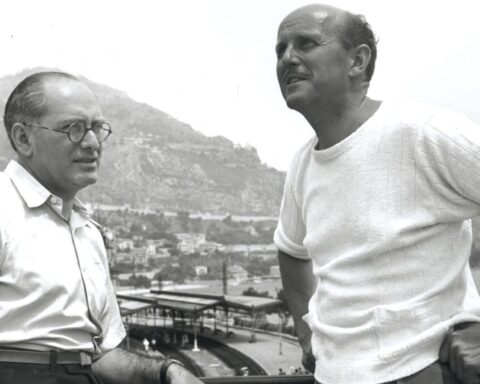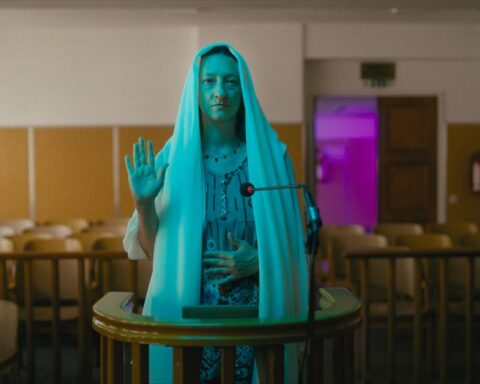Searching for Ingmar Bergman
(Germany/France, 99 min.)
Dir. Margarethe von Trotta
Programme: TIFF Docs (North American Premiere)
Few filmmakers have an aesthetic that is now synonymous with their names. A film is “Bergmanesque” if characters undergo struggles of belonging or faith told in dark, impressionistic atmospheres that are dreamlike and surreal, yet grounded in a hauntingly recognisable reality. The Swedish filmmaker’s influence extends to virtually any students who have immersed themselves in the canon of world cinema, discovered great old movies at revival theatres, or explored the pages of publications like Cahiers du Cinema and their discussions of auteur theory. The best tribute to Bergman, however, might be the generation of filmmakers he inspired. As the great German director Margarethe von Trotta pays tribute to Bergman on what would be his 100th birthday, she interviews a chorus of her contemporaries who, like Bergman, keep the love for cinema alive. What a treat it is to watch one master of world cinema honour another.
There is such sage wisdom to be found in the conversation that von Trotta enjoys with directors like Olivier Assayas, Stig Björkman, and Carlos Saura. Breaking down Bergman’s style in candid exchanges about their favourite moments of the director’s oeuvre, the pure energy of cinephilia is invigorating as one watches these veteran filmmakers discuss old movies with infectious energy. It’s like taking an intimate master class on auteur cinema in which one’s peers are masters in their own rights with not a hint of egotism.
Even better are the reflections upon Bergman’s influence on their work. Assayas and von Trotta, for example, remark that Bergmanesque moments may infiltrate their films like quotes or homages. These influences, as Assayas suggests, are unconscious citations of the great director’s work. Bergman’s impact is that he shaped how a generation of directors conceived of cinematic space and film aesthetics.
Bergman fans will especially enjoy von Trotta’s interviews with the director’s muse Liv Ullman, who still radiates the same transfixing screen presence. The two women discuss Bergman’s focus and rapport with actors while reflecting upon the longevity of a collaboration matched only by few other actor-director pairings. Ullman speaks of Bergman fondly, but fairly, as do the many other actresses who starred for him. Bergman’s long-time script supervisor Katinka Faragó, for example, says she hit her stride with the director when she proved to be the exception to his revolving door of assistants and refused to break when he berated her in order to unleash his frustration with the actors. One charm of von Trotta’s film is her ability to highlight the many talents who contribute to the success of a director’s vision, yet rarely received credit for the auteur’s work.
Von Trotta doesn’t approach Bergman’s story with a cradle to grave narrative, but she injects his biography into the analysis of his films. Tours of his childhood haunts and visits to his father’s parish, for example, contextualise the discussion of faith and spirituality in his films. Digressions into his stage drama help highlight the quality of his screenplays and the stylish theatrical lighting that proved one of his signature aesthetics.
Searching for Ingmar Bergman considers how the legacy of artists like Bergman endures from generation to generation. Von Trotta approaches this theme from two angles. First, she tracks down some of Bergman’s many children. (A womanizer, he sowed many oats and estranged himself from many children while moving from wife to wife.) His son Daniel is also a filmmaker and von Trotta enjoys a healthy conversation = that illuminates story of Bergman as a father, artist, and mentor.
The next generation of auteur filmmakers is the second angle with which she approaches Bergman’s legacy. In addition to Daniel Bergman, von Trotta invites rising auteurs like Mia Hansen-Løve (Things to Come) and Ruben Ostlund (last year’s Palme d’Or winner The Square) to share their feelings on the status of art contemporary art cinema. The final dialogue with Ostlund might by Searching for Ingmar Bergman’s strongest moment as the Swedish director lets his own style overtake the conversation. He turns the camera back on von Trotta and records her through the viewfinder of his iPhone as they discuss the advent of selfie culture and YouTube—the latter Ostlund feels is where all good original material now resides.
One can only wonder what great satire Bergman might have delivered on the age of selfies and serial narcissism. He’s dead, though, and his films are from another era. But as von Trotta’s wonderful appreciation of Bergman’s work shows, the spirit of his films resides in everyone who picks up a camera and makes art that is wonderfully and uniquely their own.











